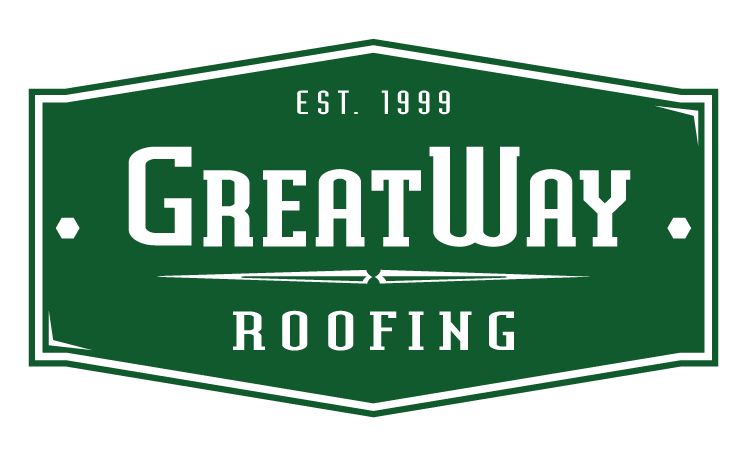Roof repairs are a critical aspect of home maintenance that should not be taken lightly. A well-maintained roof protects your home from the elements, preserves structural integrity, and enhances property value. While the idea of handling roof repairs yourself may seem appealing due to potential cost savings, DIY roof repairs have numerous hidden costs and risks.
This comprehensive guide explores why professional assistance is often the more prudent choice and details the hidden expenses of DIY projects.
The Allure of DIY Roof Repairs
DIY roof repairs have gained popularity for several reasons:
- Cost Savings: Many homeowners are motivated by the potential to save money on labor costs. By undertaking repairs themselves, they hope to avoid the expenses associated with hiring professional services.
- Sense of Accomplishment: Completing a DIY project can provide a sense of achievement and personal satisfaction. The pride of fixing a problem yourself can be a strong motivator.
- Control Over the Project: DIY repairs allow homeowners to control every aspect of the project, including the timing, methods, and materials used. This level of control can be appealing, especially if you enjoy hands-on work.
The Reality of DIY Roof Repairs
Despite the allure of DIY roof repairs, some significant hidden costs and risks can quickly offset any initial savings. Let’s delve into these hidden expenses in detail.
1. Safety Risks and Potential Injuries
Roof repairs are inherently hazardous. The process involves working at heights, handling heavy materials, and using various tools, which can pose serious safety risks:
- Falls: Falls from roofs or ladders are one of the leading causes of injury and death in construction. According to the U.S. Bureau of Labor Statistics, falls account for a significant percentage of fatal workplace accidents. DIYers working on roofs are particularly vulnerable to such falls, which can result in severe injuries such as fractures, spinal injuries, or even death.
- Ladder Accidents: Proper ladder use is crucial for safety. Many DIYers may need to become more familiar with safe ladder practices, increasing the risk of accidents. Improper ladder placement or usage can lead to falls or other injuries.
- Tool Injuries: Roof repairs often involve using tools such as nail guns, power saws, and roofing hammers. Without proper training and experience, handling these tools can The medical expenses associated with such injuries can quickly surpass the cost of hiring a professional roofer. Roofing companies prioritize safety by employing trained personnel who use appropriate safety equipment and follow strict safety protocols. This focus on safety helps mitigate the risks associated with roof repairs.
2. Improper Diagnosis and Repair
One of the most significant challenges of DIY roof repairs is accurately diagnosing and addressing roofing issues. Homeowners without professional training may:
- Misdiagnose Problems: Identifying the root cause of roofing issues requires expertise. DIYers might only address visible symptoms rather than the underlying problem. For example, a leak might be caused by damaged flashing, clogged gutters, or deteriorated shingles, not just a missing shingle.
- Make Inadequate Repairs: Even if the initial diagnosis is correct, DIY repairs may not be performed correctly. Improper installation of roofing materials or incorrect sealing techniques can lead to ineffective repairs and further damage. For example, incorrectly installed flashing can lead to water infiltration and damage to underlying structures.
- Exacerbate Existing Issues: Incorrect repairs can worsen existing problems. For instance, using the wrong type of adhesive or sealant can lead to further damage, such as mold growth or structural issues, which can increase repair costs and complexity.
Professional roofers have the expertise to diagnose issues accurately and perform effective repairs. Their experience ensures that underlying problems are resolved, preventing recurring issues and further damage. They use proven techniques and high-quality materials to ensure that repairs are durable and effective.
3. Material Costs and Wastage
DIY roof repairs can result in significant material costs and wastage. Homeowners may encounter several issues related to material costs:
- Incorrect Material Quantities: Homeowners may miscalculate the materials needed, leading to overbuying or underbuying. Overbuying results in wasted expenses, while underbuying necessitates additional purchases and trips to the store.
- Quality of Materials: DIYers might opt for lower-quality materials to save money. However, using subpar materials can affect the durability and effectiveness of the repairs. For instance, choosing inexpensive shingles may result in premature wear and tear, leading to further repair costs.
- Material Wastage: Improper cutting or handling of materials can lead to wastage. Excess material not only represents wasted expenses but also increases the project’s overall cost. Professionals have the experience and tools to minimize wastage and ensure efficient use of materials.
Professionals can access high-quality materials and tools, ensuring that repairs are durable and effective. They possess the skills to use materials efficiently, reducing wastage and overall costs.
4. Lack of Warranty and Guarantees
One of the most significant disadvantages of DIY roof repairs is the lack of warranties and guarantees. Professional roofing companies often provide:
- Workmanship Warranties: Many roofing companies offer warranties on their workmanship. This means that if issues arise due to improper installation or workmanship, the company will cover the cost of repairs or rework.
- Manufacturer’s Warranties: Proper installation by professionals ensures that manufacturer warranties on roofing materials remain valid. DIY installation might void these warranties, leaving homeowners liable for future problems.
Without these assurances, homeowners are responsible for any future repairs or issues resulting from their DIY work. This lack of coverage can result in additional expenses and a greater financial burden if problems arise.
5. Time and Effort
DIY roof repairs require a significant investment of time and effort. Homeowners must:
- Research and Planning: Understanding roofing repair techniques, sourcing materials, and planning the project can take time and effort, especially for those who have experience. Researching best practices and techniques takes time and effort, and mistakes in planning can lead to additional problems.
- Physical Labor: Roof repairs are physically demanding. Climbing ladders, carrying materials, and working in uncomfortable positions require considerable physical effort. The physical strain can be significant, especially for those unfamiliar with such tasks.
- Handling Unexpected Challenges: DIY projects often encounter unforeseen issues, such as structural problems or weather-related delays. Addressing these challenges can extend the project duration and increase frustration. For example, unexpected rain or damage discovered during the repair process can lead to additional work and costs.
Professional roofers have the skills and experience to complete repairs efficiently and effectively. By hiring experts, homeowners save time and avoid the physical demands of the project. Professionals handle all aspects of the repair, from initial assessment to final touches, ensuring the job is done correctly and promptly.
The Benefits of Hiring Professional Roofers
Given the hidden costs associated with DIY roof repairs, the benefits of hiring professional roofers for repairs become increasingly apparent. These benefits include:
1. Expert Diagnosis and Repair
Professional roofers bring a wealth of expertise and experience to the job. They offer:
- Accurate Diagnosis: Professionals can quickly and accurately identify the root cause of roofing issues. This ensures that repairs address underlying problems rather than just symptoms, preventing future issues and extending the lifespan of the repair.
- Effective Repairs: Experienced roofers use proven techniques and high-quality materials to perform repairs that are durable and reliable. Their expertise ensures that repairs are completed to industry standards, providing long-lasting results.
2. Enhanced Safety
Safety is a top priority for professional roofing companies. They employ trained personnel who:
- Use Proper Safety Equipment: Roofers use safety harnesses, fall protection gear, and other equipment to minimize the risk of accidents. Proper equipment and safety protocols help prevent injuries and ensure a safe working environment.
- Follow Safety Protocols: Professionals adhere to safety regulations and guidelines set by organizations such as OSHA. This commitment to safety helps mitigate the risks associated with roof repairs and ensures that the job is performed safely.
3. Quality Materials and Workmanship
Professional roofers have access to high-quality materials and tools, ensuring:
- Durable Repairs: The use of top-quality materials and expert installation results in long-lasting repairs that withstand the elements. Quality materials and workmanship contribute to the overall durability and effectiveness of the repairs.
- Professional Standards: Work is completed according to industry standards, ensuring reliable and effective results. Professionals follow best practices and use advanced techniques to achieve optimal outcomes.
4. Warranties and Guarantees
Professional roofing companies often provide:
- Workmanship Warranties: Coverage for any issues arising from the repair work, offering peace of mind and financial protection. Warranties ensure that homeowners are protected from additional costs related to repair issues.
- Manufacturer’s Warranties: The validity of warranties on roofing materials ensures protection against future problems. Proper installation by professionals maintains the validity of manufacturer warranties, providing additional security for homeowners.
5. Time and Convenience
Hiring professionals saves homeowners significant time and effort. Professionals handle all aspects of the repair, allowing homeowners to:
- Avoid Learning Curves: Professionals handle all aspects of the repair, eliminating the need for homeowners to research and learn. This allows homeowners to focus on other priorities and avoid the stress of managing the project themselves.
- Enjoy Peace of Mind: Homeowners can trust that the repair is completed correctly and efficiently without the stress and uncertainty associated with DIY projects. Professionals provide reliable results and ensure the job is done well.
Conclusion
While DIY roof repairs might seem like an attractive option due to potential cost savings, the hidden costs and risks associated with these projects often outweigh the initial benefits. From safety concerns and improper repairs to material wastage and a lack of warranties, the drawbacks of DIY repairs highlight the importance of professional assistance.
Hiring experienced roofers ensures accurate diagnosis, quality workmanship, and long-term peace of mind. By investing in professional help, homeowners protect their property and avoid the potential pitfalls of DIY repairs. Entrusting the job to experts proves to be a wise choice for reliable and effective roof repairs, offering both immediate and long-term value.
Choosing professional roofing services ensures the safety and durability of your repairs and provides valuable benefits such as warranties and high-quality workmanship. The hidden costs of DIY roof repairs make it clear that professional help is often the more cost-effective and reliable option in the long run.

